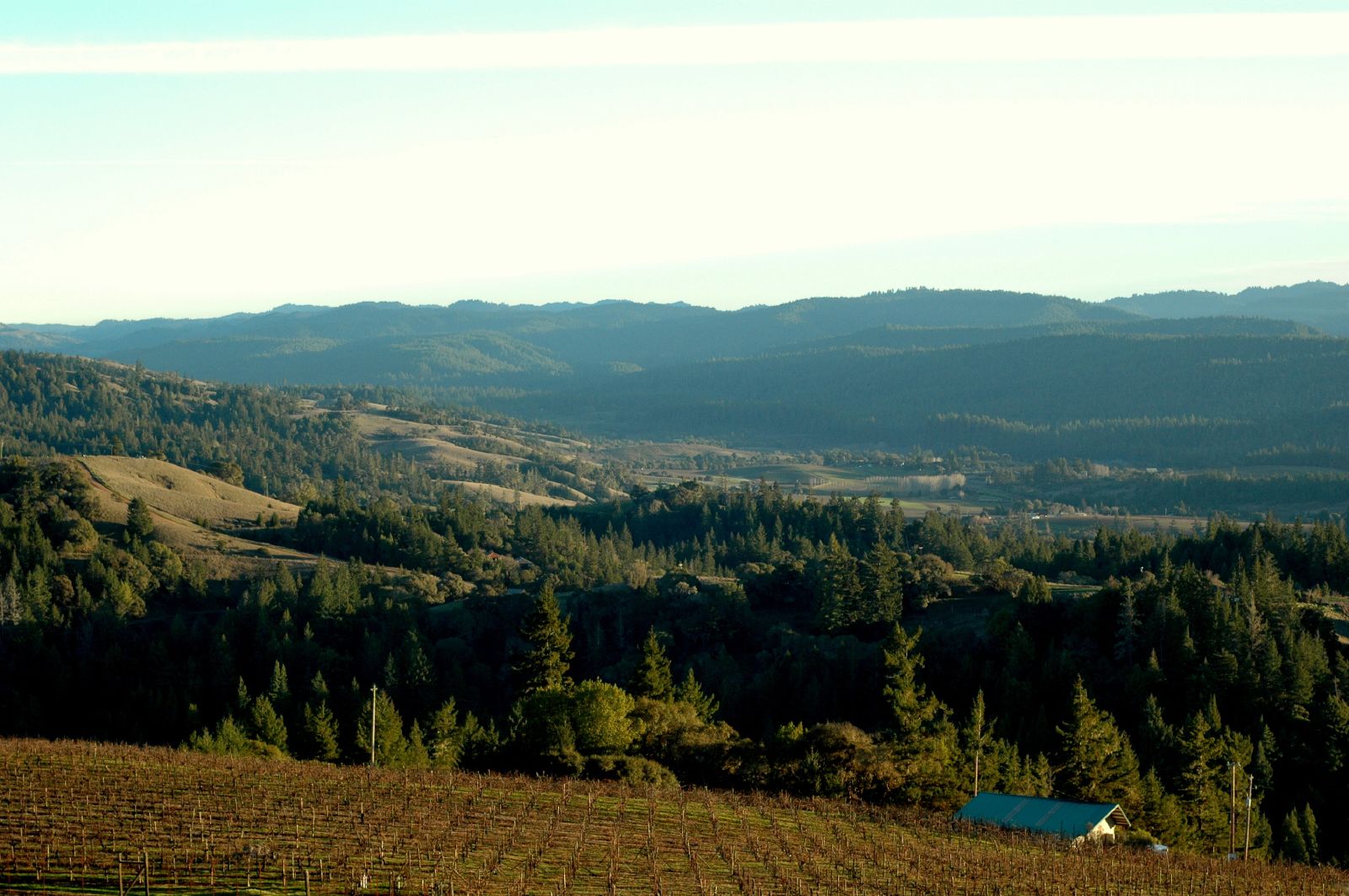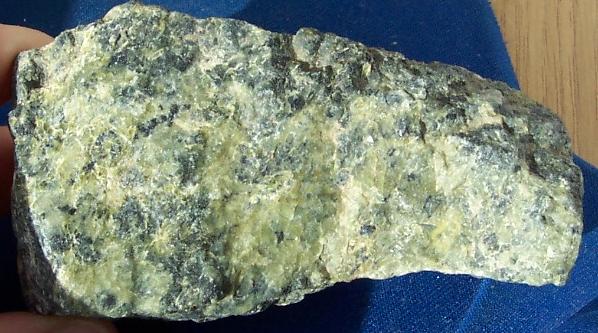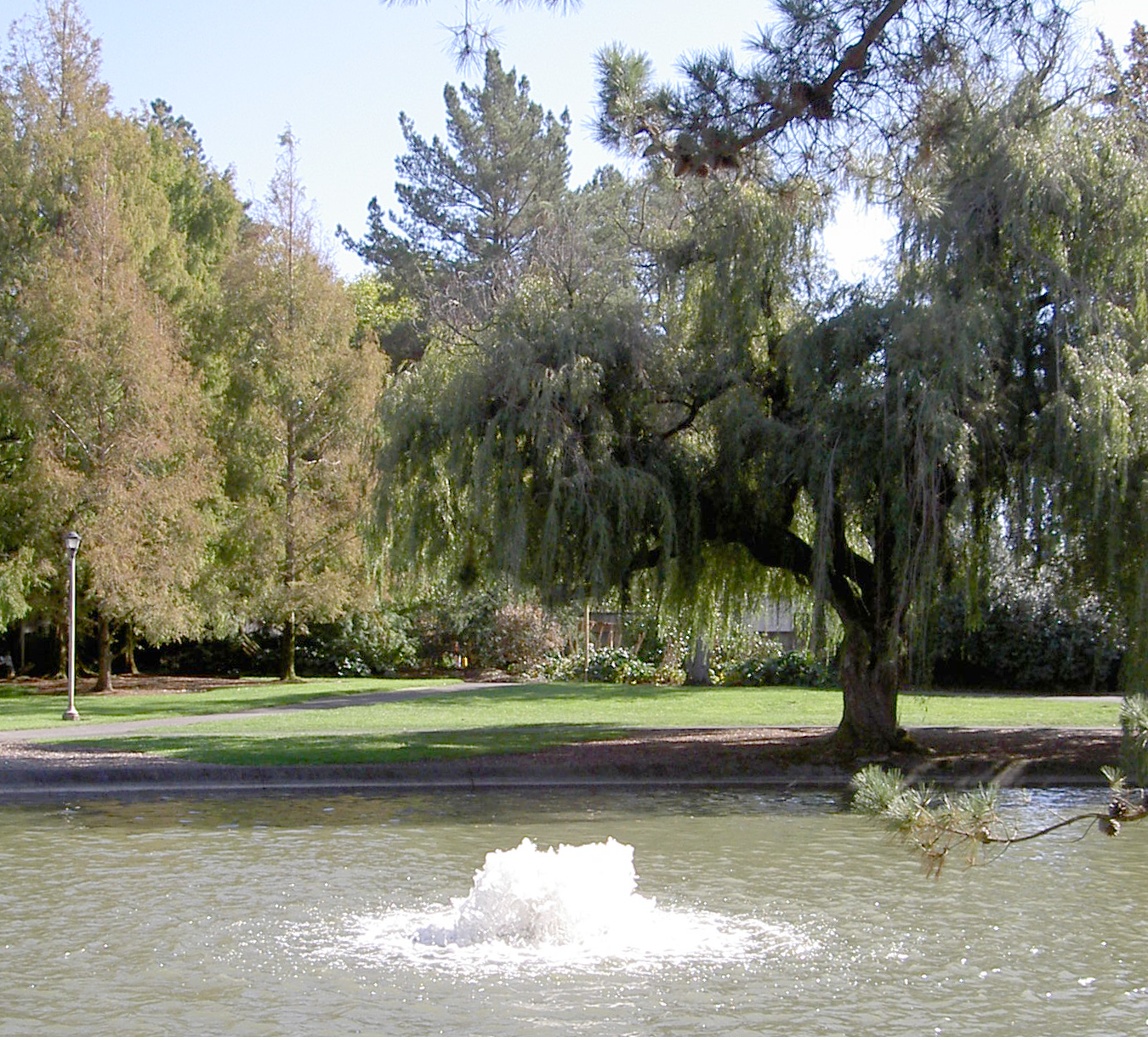|
Galbreath Wildlands Preserve
The Galbreath Wildlands Preserve is a nature reserve in Mendocino County, California, United States, established in 2004 in honor of Fred Burckhalter Galbreath (1901-2000). The preserve, a former sheep ranch, is located in the Outer Coast Range from the coast, near Yorkville. The Preserve features woodland, forest and grassland communities that lie at the edge of coastal fog influence. Lands are in the upper Rancheria sub-basin of the Navarro Watershed and contain 1st - 5th order streams. The Preserve's forests are primarily second-growth coniferous forest and hardwood. History At the time of historic contact with Europeans, the Preserve was within the territory of the Central Pomo people. Central Pomo speakers occupied land from the southern Mendocino coast at the mouth of the Gualala River, extending north just above the Navarro River and east to the crest of the Russian River divide, approximately inland. The redwood-covered mountains between the coast and the valleys w ... [...More Info...] [...Related Items...] OR: [Wikipedia] [Google] [Baidu] |
Mendocino County, California
Mendocino County (; ''Mendocino'', Spanish for "of Mendoza) is a county located on the North Coast of the U.S. state of California. As of the 2020 census, the population was 91,601. The county seat is Ukiah. Mendocino County consists wholly of the Ukiah, CA Micropolitan Statistical Area (μSA) for the purposes of the U.S. Census Bureau. It is located approximately equidistant from the San Francisco Bay Area and California/Oregon border, separated from the Sacramento Valley to the east by the California Coast Ranges. While smaller areas of redwood forest are found further south, it is the southernmost California county to be included in the World Wildlife Fund's Pacific temperate rainforests ecoregion, the largest temperate rainforest ecoregion on the planet. The county is noted for its distinctive Pacific Ocean coastline, its location along California's "Lost Coast", Redwood forests, wine production, microbrews, and liberal views about the use of cannabis and support fo ... [...More Info...] [...Related Items...] OR: [Wikipedia] [Google] [Baidu] |
United States General Land Office
The General Land Office (GLO) was an independent agency of the United States government responsible for public domain lands in the United States. It was created in 1812 to take over functions previously conducted by the United States Department of the Treasury. Starting with the enactment of the Land Ordinance of 1785, which created the Public Land Survey System, the Treasury Department had already overseen the survey of the Northwest Territory, including what is now the state of Ohio. Placed under the Department of the Interior when that department was formed in 1849, it was merged with the United States Grazing Service (established in 1934) to become the Bureau of Land Management on July 16, 1946. History The GLO oversaw the surveying, platting, and sale of the public lands in the Western United States and administered the Homestead Act and the Preemption Act in disposal of public lands. The frantic pace of public land sales in the 19th century American West led to the i ... [...More Info...] [...Related Items...] OR: [Wikipedia] [Google] [Baidu] |
Wood Duck Pond Trees
Wood is a porous and fibrous structural tissue found in the stems and roots of trees and other woody plants. It is an organic materiala natural composite of cellulose fibers that are strong in tension and embedded in a matrix of lignin that resists compression. Wood is sometimes defined as only the secondary xylem in the stems of trees, or it is defined more broadly to include the same type of tissue elsewhere such as in the roots of trees or shrubs. In a living tree it performs a support function, enabling woody plants to grow large or to stand up by themselves. It also conveys water and nutrients between the leaves, other growing tissues, and the roots. Wood may also refer to other plant materials with comparable properties, and to material engineered from wood, or woodchips or fiber. Wood has been used for thousands of years for fuel, as a construction material, for making tools and weapons, furniture and paper. More recently it emerged as a feedstock for the product ... [...More Info...] [...Related Items...] OR: [Wikipedia] [Google] [Baidu] |
United States Geological Survey
The United States Geological Survey (USGS), formerly simply known as the Geological Survey, is a scientific agency of the United States government. The scientists of the USGS study the landscape of the United States, its natural resources, and the natural hazards that threaten it. The organization's work spans the disciplines of biology, geography, geology, and hydrology. The USGS is a fact-finding research organization with no regulatory responsibility. The agency was founded on March 3, 1879. The USGS is a bureau of the United States Department of the Interior; it is that department's sole scientific agency. The USGS employs approximately 8,670 people and is headquartered in Reston, Virginia. The USGS also has major offices near Lakewood, Colorado, at the Denver Federal Center, and Menlo Park, California. The current motto of the USGS, in use since August 1997, is "science for a changing world". The agency's previous slogan, adopted on the occasion of its hundredth an ... [...More Info...] [...Related Items...] OR: [Wikipedia] [Google] [Baidu] |
Rancheria Creek
{{Geodis ...
Rancheria Creek may refer to: * Rancheria Creek (Tuolumne County, California), a stream in California *Rancheria Creek (Big Butte Creek tributary), a stream in Oregon See also * Rancheria River (other) * Rancheria (other) A Ranchería is a small rural settlement Rancharia, Rancheria, Ranchería or Rancherío may also refer to: Communities * Rancharia, a municipality in São Paulo, Brazil * Rancheria, a locality in Canada's Yukon territory * Colusa Rancheria, Ca ... [...More Info...] [...Related Items...] OR: [Wikipedia] [Google] [Baidu] |
Anderson Valley
Anderson Valley is a sparsely populated region in western Mendocino County in Northern California. Located approximately north of San Francisco, the name "Anderson Valley" applies broadly to several rural, unincorporated communities in or near the alluvial terraces along Anderson Creek and other tributaries to the Navarro River. It is named after William Anderson, an early European settler to the area. Geography The name "Anderson Valley" applies to a region stretching from Boonville (located on Anderson Creek) and Philo (located on Indian Creek) to Navarro (located on Soda Creek). Rancheria, Anderson, Indian and Soda creeks are tributaries to the Navarro River, which flows north and west through the coastal range to the Pacific Ocean; Dry Creek flows south into the Russian River watershed in Sonoma County. The main stem of the Navarro River begins less than a mile south of Philo at the confluence of Anderson Creek and Rancheria Creek. The mouth of the Navarro is south ... [...More Info...] [...Related Items...] OR: [Wikipedia] [Google] [Baidu] |
Serpentine Subgroup
Serpentine subgroup (part of the kaolinite-serpentine group in the category of phyllosilicates) are greenish, brownish, or spotted minerals commonly found in serpentinite. They are used as a source of magnesium and asbestos, and as decorative stone. The name comes from the greenish colour and smooth or scaly appearance from the Latin , meaning "serpent rock". Serpentine subgroup is a set of common rock-forming hydrous magnesium iron phyllosilicate () minerals, resulting from the metamorphism of the minerals that are contained in mafic to ultramafic rocks. They may contain minor amounts of other elements including chromium, manganese, cobalt or nickel. In mineralogy and gemology, serpentine may refer to any of the 20 varieties belonging to the serpentine subgroup. Owing to admixture, these varieties are not always easy to individualize, and distinctions are not usually made. There are three important mineral polymorphs of serpentine: antigorite, lizardite and chrysotile. S ... [...More Info...] [...Related Items...] OR: [Wikipedia] [Google] [Baidu] |
Franciscan Assemblage
The Franciscan Complex or Franciscan Assemblage is a geologic term for a late Mesozoic terrane of heterogeneous rocks found throughout the California Coast Ranges, and particularly on the San Francisco Peninsula. It was named by geologist Andrew Lawson, who also named the San Andreas fault that defines the western extent of the assemblage. The Franciscan Complex is dominated by greywacke sandstones, shales and conglomerates which have experienced low-grade metamorphism. Other important lithologies include chert, basalt, limestone, serpentinite, and high-pressure, low-temperature metabasites ( blueschists and eclogites) and meta-limestones. Fossils like radiolaria are found in chert beds of the Franciscan Complex. These fossils have been used to provide age constraints on the different terranes that constitute the Franciscan. The mining opportunities within the Franciscan are restricted to deposits of cinnabar and limestone. The outcrops of the formation have a very large ... [...More Info...] [...Related Items...] OR: [Wikipedia] [Google] [Baidu] |
North American Plate
The North American Plate is a tectonic plate covering most of North America, Cuba, the Bahamas, extreme northeastern Asia, and parts of Iceland and the Azores. With an area of , it is the Earth's second largest tectonic plate, behind the Pacific Plate (which borders the plate to the west). It extends eastward to the Mid-Atlantic Ridge and westward to the Chersky Range in eastern Siberia. The plate includes both continental and oceanic crust. The interior of the main continental landmass includes an extensive granitic core called a craton. Along most of the edges of this craton are fragments of crustal material called terranes, which are accreted to the craton by tectonic actions over a long span of time. It is thought that much of North America west of the Rocky Mountains is composed of such terranes. Boundaries The southern boundary with the Cocos Plate to the west and the Caribbean Plate to the east is a transform fault, represented by the Swan Islands Transform Fa ... [...More Info...] [...Related Items...] OR: [Wikipedia] [Google] [Baidu] |
Pacific Plate
The Pacific Plate is an oceanic tectonic plate that lies beneath the Pacific Ocean. At , it is the largest tectonic plate. The plate first came into existence 190 million years ago, at the triple junction between the Farallon, Phoenix, and Izanagi Plates. The Pacific Plate subsequently grew to where it underlies most of the Pacific Ocean basin. This reduced the Farallon Plate to a few remnants along the west coast of North America and the Phoenix Plate to a small remnant near the Drake Passage, and destroyed the Izanagi Plate by subduction under Asia. The Pacific Plate contains an interior hot spot forming the Hawaiian Islands. Boundaries The north-eastern side is a divergent boundary with the Explorer Plate, the Juan de Fuca Plate and the Gorda Plate forming respectively the Explorer Ridge, the Juan de Fuca Ridge and the Gorda Ridge. In the middle of the eastern side is a transform boundary with the North American Plate along the San Andreas Fault, and a boundary w ... [...More Info...] [...Related Items...] OR: [Wikipedia] [Google] [Baidu] |
Sonoma State University
Sonoma State University (SSU, Sonoma State, or Sonoma) is a public university in Rohnert Park in Sonoma County, California, US. It is one of the smallest members of the California State University (CSU) system. Sonoma State offers 92 Bachelor's degrees, 19 Master's degrees, and 11 teaching credentials. The university is a Hispanic-serving institution. History Founding Sonoma State College was established by the California State Legislature in 1960 to be part of the California State College system, with significant involvement of the faculty from San Francisco State University. As with all California State Colleges, Sonoma State later became part of the California State University system. Sonoma opened for the first time in 1961, with an initial enrollment of 250 students. Classes offered took place in leased buildings in Rohnert Park where the college offered its first four-year Bachelor of Arts degree in Elementary Education. With the completion of its two main classroom ... [...More Info...] [...Related Items...] OR: [Wikipedia] [Google] [Baidu] |
%2C_angle%2C_Route_101%2C_Ukiah%2C_California_LOC_37143730483.jpg)





